Journal of Alcoholism & Drug Dependence
Open Access
ISSN: 2329-6488
ISSN: 2329-6488
Case Report - (2022)Volume 10, Issue 5
Behavior due to causes or stimuli so powerful that they have produced psychological alterations such as outbursts, blind rage or other similar passionate states, is usually the common denominator of a good part of the cases for which forensic and/or criminological analysis of human conduct is undertaken The psychological profile of a 40-year-old patient and the juridical-legal consequences of a crime against human life perpetrated are described, from the harmful and toxic influence of his emotions and seized by the anger and anger he maintained against the victim, giving him a punch of such intensity that it caused him to lose consciousness enough and necessary to cause his death due to the strong impact of the skull on the ground. In this case, the perpetrator's outburst was caused because the victim had surreptitiously supplied drugs to her affective-sentimental partner.
Outburst; Blind rage; Intentional homicide; Drug dealing; Forensic psychometry
About 50 percent of the offenders were under the influence of alcohol at the time of the crime, similar to the rate found by other studies. Substance use was more prevalent than nonuse before the homicide: 36 percent used alcohol only, 13 percent used both alcohol and drugs, 7 percent used drugs only, and 43 percent did not use either. A heavier style of drinking is much more prevalent among homicide offenders than in the general population. Blacks showed the least involvement with alcohol before homicide. A direct role for alcohol is indicated by the finding that homicides were associated with a heavier than usual episode of drinking and the large mean alcohol consumption contiguous to the crime (9.3 ounces of alcohol or about 18 drinks). Evidence also indicates that a unique relationship existed between drug use and homicide [1].
Results indicated that paranoid personality disorder was prevalent among homicide offenders while antisocial personality disorder was prevalent among non-homicide offenders [2]. In the present case, in a party at a prestigious coastal nightclub, the interesting case of how a subject was overwhelmed by harmful emotions related to a bad experience as a result of the death of a family member from the consumption of toxins, on observing the victim offering toxic substances to his partner, he perpetrated a crime of intentional homicide by punching him with such intensity that he immediately became unconscious, falling on thespot, inflicting a fatal blow to his occipital region [3,4].The psychological profile of the subject and the juridical-legal consequences of said behavior, perpetrated from the perspective of an outburst or blind rage, are described [5,6].
The patient is a 40-year-old man, with a high school education level, who reported having worked as a manager in hotels and restaurants for about 15 years. Likewise, he also mentioned that he had worked as a Security Guard and had knowledge of fighting sports, such as Jiu-Jitsu, Boxing and Kick Boxing.
During the anamnesis carried out at the penitentiary center where he had been serving a custodial sentence for 3 years as a preventive inmate awaiting trial, he said that throughout his life he had had the bad experience of having seen how his brother "had eventually lost his life due to the consumption of toxic substances and that he would never want the same for the people". The 40-year-old man added that due to that adverse episode in his biography, on observing how the victim had supplied substances to his sentimental partner, he was "seized with rage to put a stop to that situation."
Sentence recounts the facts
After the camp and when the staffs (waiters and runners) were clearing the premises, the accused noticed an exchange of what could have been toxic substances apparently cocaine between the victim and other people. He approached them and discovered that said transaction had been made on behalf of the then sentimental partner of the accused.
The accused, after a brief argument with the victim on the matter, dealt him a blow that caused a cut on his lip, for which he then went to the bar’s office to treat the superficial injury.
Minutes later, while the victim was dealing with the wound, accompanied by different colleagues, the accused reappeared in the office area, heading towards him while he was grabbed by other security workers of the establishment. Once the accused reached the victim, he punched him with such force, in the right side of the head, that it caused the immediate loss of consciousness, keeling over and the occipital left part of the head impacted directly on the ground, producing a skull fracture with cerebral intracranial hemorrhage. After a short period of time, an ambulance came to the establishment and, after an initial attempt at resuscitation, it was determined that the victim suffered from a level of unconsciousness graduated on the Glasgow scale of 6 out of 15. After a few days in a comatose state, the victim died from a massive brain hemorrhage. The victim was 29 years old at the time of the events, single and without children. The abovementioned acts were committed by the defendant knowing or being able to understand that the punch he delivered to the victim's head would immediately render him unconscious, assuming the risk that he would fall to the ground inflicting a fatal blow to the occipital region of the victim’s head that could be mortal. The deep aversion to drugs suffered by the accused caused him, after having witnessed how the deceased delivered toxic substances to third parties, at the request of his girlfriend, a state of mind blocking his conscience to such an intensity that it determined, almost completely, his behavior.”
In order to study and analyze the case described, the anamnesis was carried out at the penitentiary center where the evaluated person was admitted. Psychological tests were administered in order to evaluate and objectify the psychic state, complemented with the reading and analysis of the documentation provided to the legal case and the video from the security camera that the nightclub had available.
In order to be able to objectively accredit the state of mental health of the accused, the psychometric evaluation test MCMI-III was administered, which consists of 175 items answered by True or False; the PAI–Personality Assessment Inventory which looks at the most relevant personality characteristics in clinical and forensic evaluation and that consists of 344 items with 4 response alternatives; and the SIMS consisting of 75 dichotomous response items, True or False.
From the MCMI-III psychological test, a statistically significant score is inferred on the “sincerity” validity scale with a PREVscore=85, which suggests prudence and precaution in the interpretation of the rest of the scores on the graph obtained.Based on the fact that the subject had been in prison for 3 years (from the moment of his entry until he was evaluated by the professional), scores are derived that are compatible with prison paranoia, which is derived from the situation of coexistence and the personal and interpersonal relationships formed in this institution: “Aggressive-Sadistic” (PREV=104), “Paranoid” (PREV=94) and “Narcissistic” (PREV=92). These last scales would also justify the score obtained on the "sincerity" scale, given that this type of profile usually yields statistically significant indices, as can be deduced from the graph obtained (Figures 1-4).
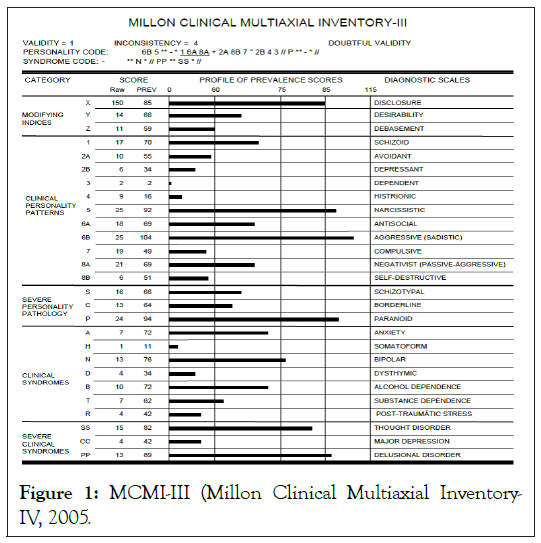
Figure 1: MCMI-III (Millon Clinical Multiaxial Inventory- IV, 2005.
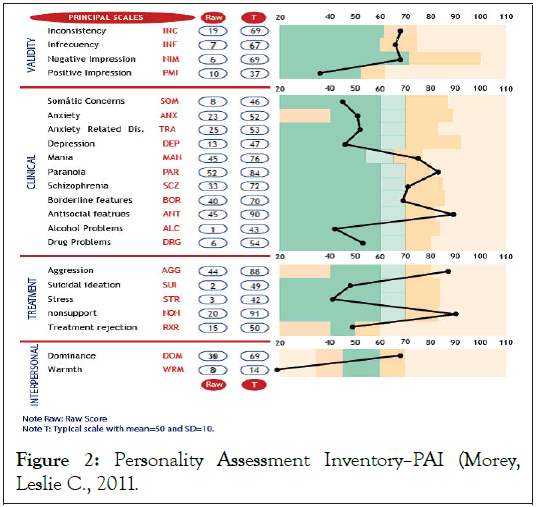
Figure 2: Personality Assessment Inventory–PAI (Morey, Leslie C., 2011.
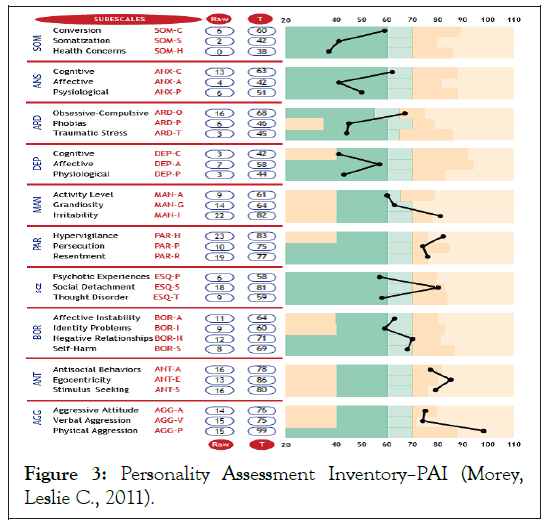
Figure 3: Personality Assessment Inventory–PAI (Morey, Leslie C., 2011).
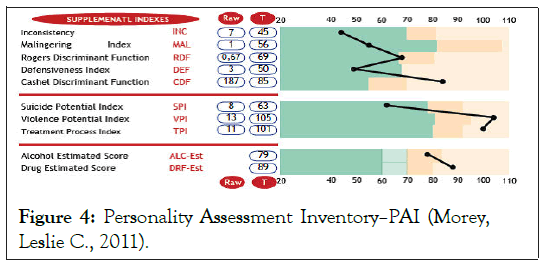
Figure 4: Personality Assessment Inventory–PAI (Morey, Leslie C., 2011).
From the PAI test, clinically significant scores emerge on the scales of "Antisocial Traits" (T=90), "Aggression" (T=88), "Paranoia" (T=84). It also presents significance in "Dominance" (T=69).
The subscales and complementary indices align with the degree of clinical-statistical significance obtained in the main scales mentioned above (Figure 5).
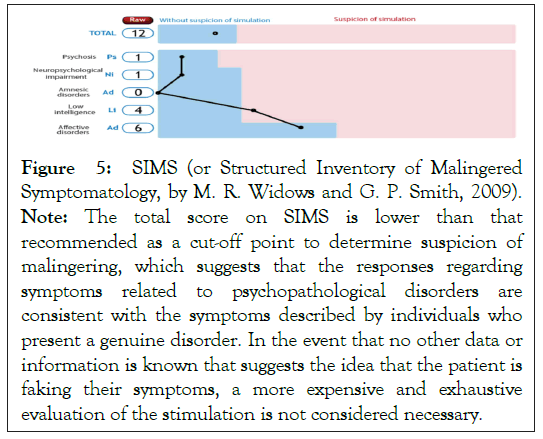
Figure 5: SIMS (or Structured Inventory of Malingered Symptomatology, by M. R. Widows and G. P. Smith, 2009). Note: The total score on SIMS is lower than that recommended as a cut-off point to determine suspicion of malingering, which suggests that the responses regarding symptoms related to psychopathological disorders are consistent with the symptoms described by individuals who present a genuine disorder. In the event that no other data or information is known that suggests the idea that the patient is faking their symptoms, a more expensive and exhaustive evaluation of the stimulation is not considered necessary.
The total score obtained in the SIMS reveals compatibility that "there is no suspicion of malingering” and may suggest the nonintentionality of malingering in the subject. The entire set of scores obtained is compared with the scores obtained in the MCMI-III graph above.
It is interesting to point out that the scales gathered as clinically and statistically significant in both tests administered (MCMI-III and PAI): "Antisocial traits", "Aggressiveness", "Paranoia" or "Dominance" (in the case of the PAI), are behavioral patterns which tend to manifest with a certain pathological impulsiveness and that would help explain the states of outburst or blind rage.
Within this behavioral context, the aggressor manifested an acute and critical psycho-emotional alteration, immediately prior to the commission of the tragic event; or put another way, he let himself be seized by the negative emotions of rage and a psychological state of emotional outburst that pervaded harmfully and dangerously in his behavior.
This circumstance led him to experience the pernicious excitation and impulsiveness typical of the aggressive or hostile paranoid exacerbation of his basic personality traits, suffering such an alteration of his conscience and his capacity for selfcriticism with sufficient intensity to break the inhibitory mechanisms of his behavior, manifested behaviorally in a highly harmful way, without being able to assess in those precise moments-the fatal consequences that could derive from it.
From the perspective of the emotional alterations, and in the absence of a major mental disorder, it was understood that the perpetrator could suffer as a result of the aggravation of the paranoid personality traits mentioned above an alteration in his state of mind and his emotions in a way so sudden and acute that it gave rise to a pathological behavioral explosion of an impulsive type. That impulsive act was sudden and immediate. According to the Court, he acted “under a mental state of blocked conscience that determined his behavior, due to his deep aversion to drugs.” This was greatly influenced by the experience of the death of his brother, which occurred years before, due to serious multiple drug addiction. The trial took place over several days, one of them being dedicated to the psychological assessment of the case by the various mental health professionals who participated.
Before the Members of the Jury, there was an intense debate about when the victim died, that is did the victim die as a result of the punch that the perpetrator gave him, or was it due to the concussion he suffered when he fell unconsciously and impacted traumatically on the ground? The above question was finally resolved by the Judgment in accordance with the second consideration, stating that: "The accused knowing, or being able to understand, that the punch he delivered to the victim's head would immediately render him unconscious, assuming the risk that he would fall to the ground inflicting a fatal blow to the occipital region of the victim’s head that could be mortal as it was.” The Members of the Jury Court, by majority, considered that “the punch was delivered by the accused knowing the risk of taking the life of A, while it was proven that given the physical circumstances of the accused (through video and photographs provided), with his instructor level knowledge of fighting sports, such as Jiu-Jitsu, Boxing and Kick boxing according to a witness statement, the defendant must have realized that a punch given by him and with the intensity in which he did it, could cause the intended outcome. And it is that, although the forensic doctors' expertise concluded that the punch in itself was not capable of producing death and that it occurred as a consequence of the strong blow received in the occipital area of the head when the deceased collapsed to the ground, the truth is that the particular conditions of the accused made the jury decide to consider that, although the blow could constitute reckless homicide, in this specific case, with the conditions of the accused, he should have been aware that one punch from him could cause events to unfold as they unfortunately did.” Therefore, the Judgment resolved the conviction of the accused as follows:
The defendant is considered materially responsible for a crime of intentional homicide, with the concurrence of the highly qualified extenuating circumstance of outburst or blind rage and the simple one of repairing the damage, imposing a sentence of four years and six months prison.
From the forensic point of view, states of outburst or blindrage (or similar state of passion) cannot be measured directly with psychological tests. These psychological-emotional forensic situations can only be established from the analytical perspective of the rest of the potentially indicative elements that can support the argumentation of said state of outburst or similar. In this case, in the security video recordings, it was possible to directly observe the course of events or iter criminis of the perpetrator and the forensic psychopathological expert was a complementary aid in the technical explanation of the behavior that was the object of analysis.
Citation: Tiffon BN, Fernández JG (2022) Outburst or Fit of Blind Rage and Intentional Homicide in a Drug Dealing Context. J Alcohol Drug Depend. 10:367.
Received: 09-Sep-2022, Manuscript No. JALDD-22-19033; Editor assigned: 12-Sep-2022, Pre QC No. JALDD-22-19033 (PQ); Reviewed: 26-Sep-2022, QC No. JALDD-22-19033; Revised: 03-Oct-2022, Manuscript No. JALDD-22-19033 (R); Published: 10-Oct-2022 , DOI: 10.35248/2329-6488.22.10.367
Copyright: © 2022 Tiffon BN, et al. This is an open-access article distributed under the terms of the Creative Commons Attribution License, which permits unrestricted use, distribution, and reproduction in any medium, provided the original author and source are credited.